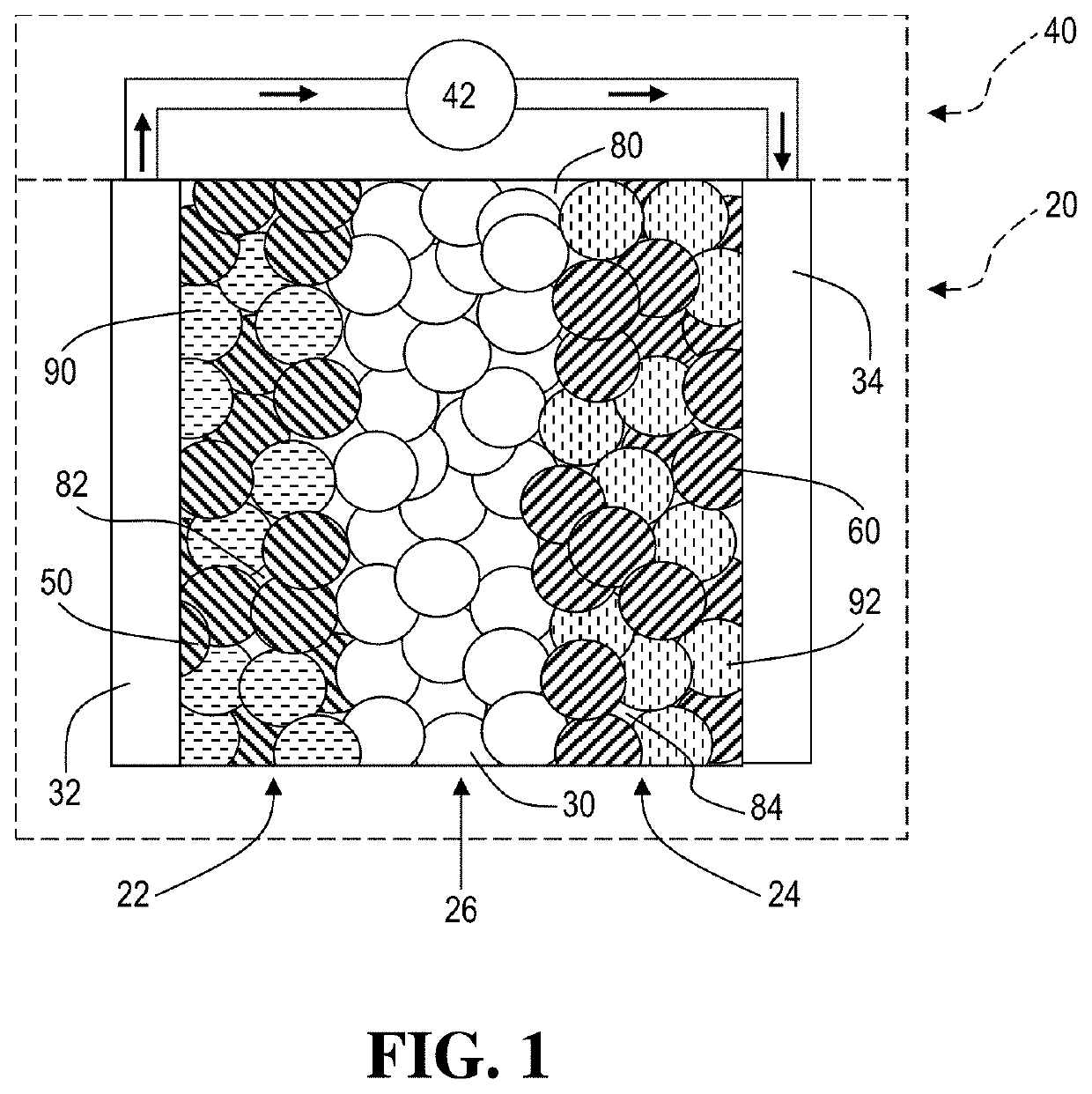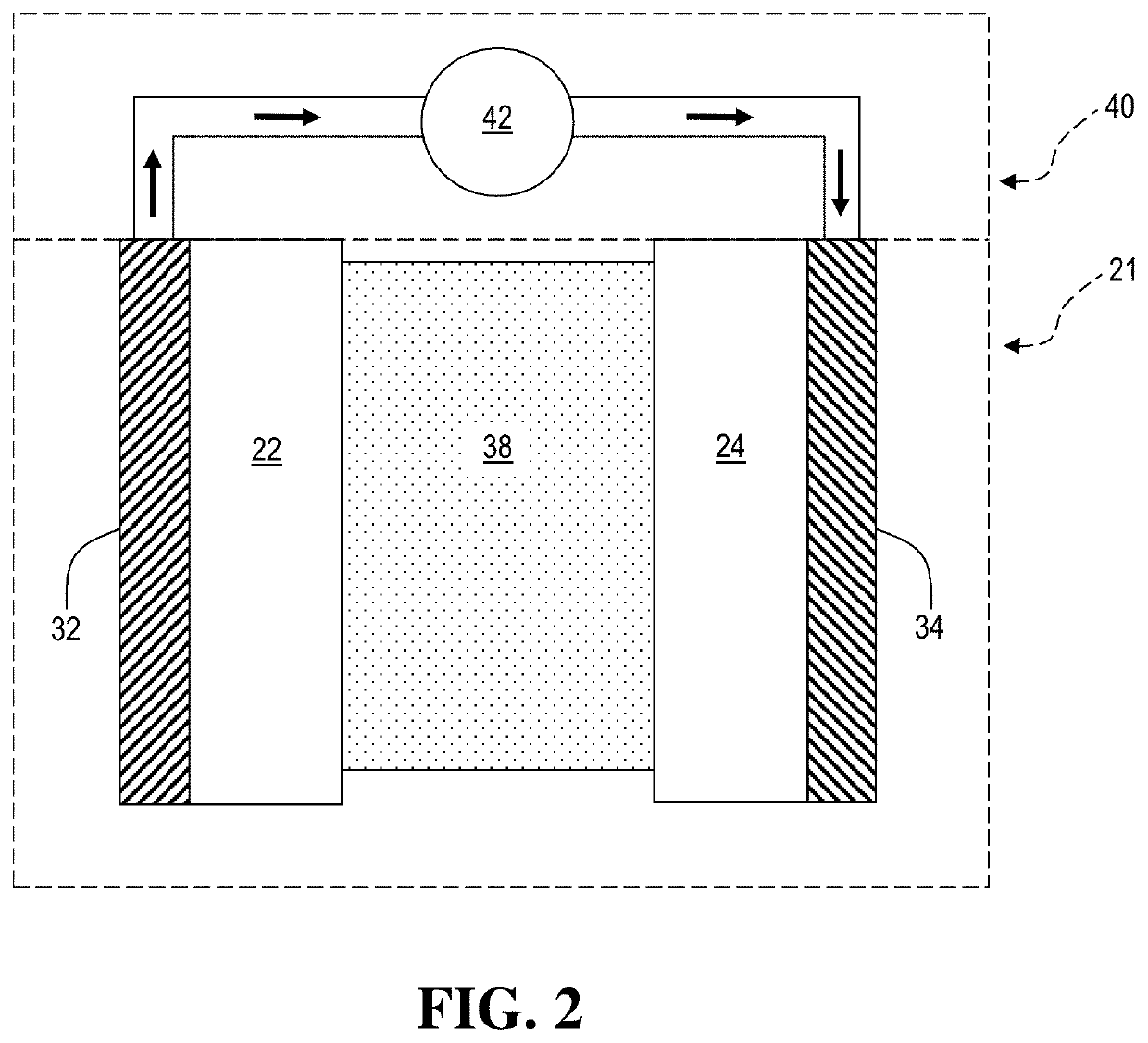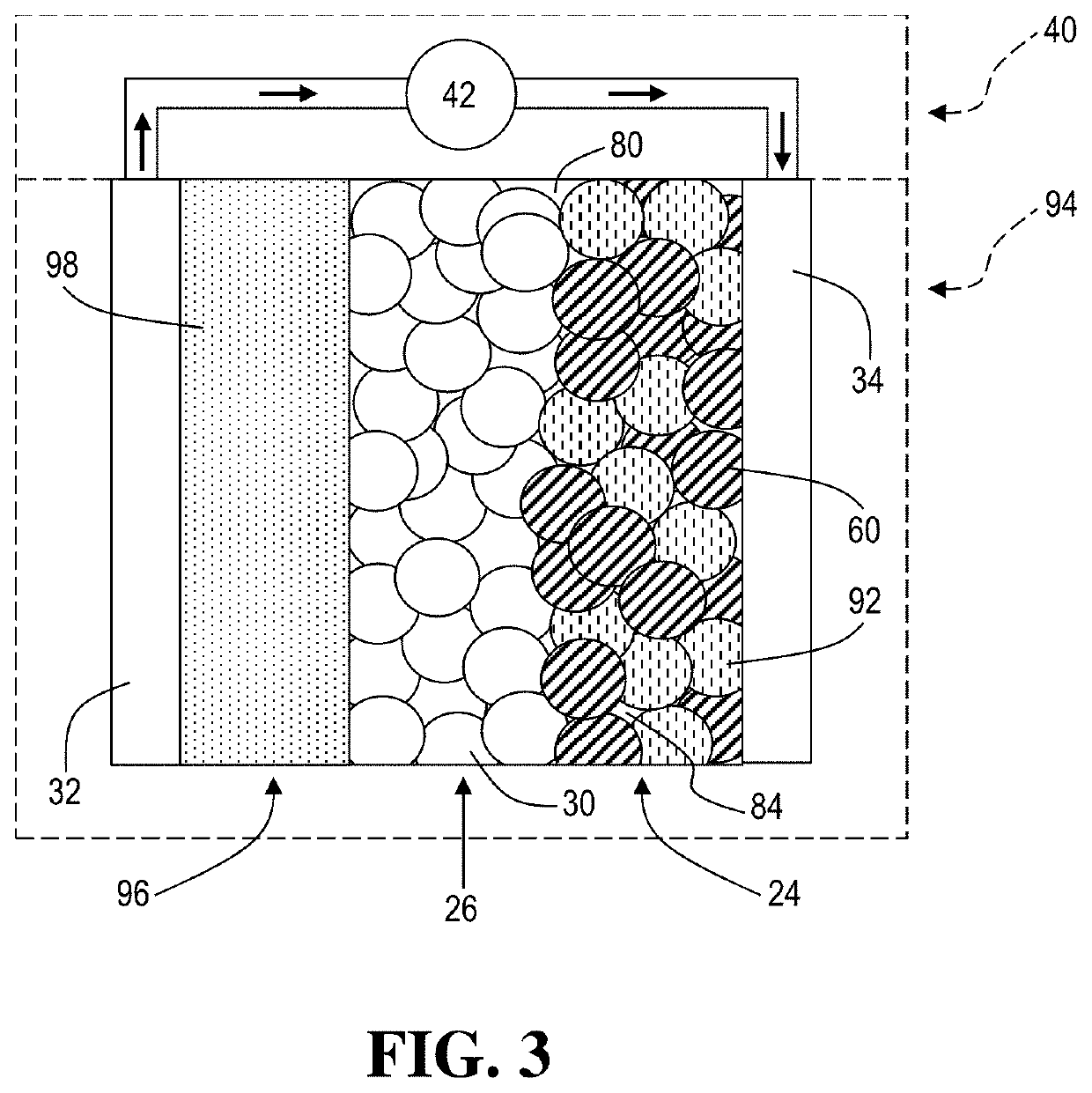Additive to ceramic ion conducting material to mitigate the resistive effect of surface carbonates and hydroxides
a technology of ceramic ion conducting material and resistive effect, which is applied in the direction of cell components, cell component details, electrochemical generators, etc., can solve the problems of loss of llzo lithium, high interfacial impedance, additional loss of lithium, etc., and achieve the effect of preventing, inhibiting or minimizing dendrite formation
- Summary
- Abstract
- Description
- Claims
- Application Information
AI Technical Summary
Benefits of technology
Problems solved by technology
Method used
Image
Examples
example
[0085]A method is performed to modify layers of Li2CO3 formed on surfaces of LLZO particles. A plurality of LLZO particles is obtained. At least a portion of each LLZO particle of the plurality is coated with a layer of Li2CO3. Therefore, the LLZO particles are substantially non-conductive to lithium ions.
[0086]As first controls, first pluralities of the LLZO particles in the form of discs are independently sintered at 1000° C., 1050° C., and 1100° C.
[0087]As second controls, second pluralities of the LLZO particles in parallelepiped form are independently sintered at 1000° C. and 1100° C.
[0088]As samples, LiF powder is added to third pluralities of the LLZO particles in parallelepiped form to form four mixtures. The LiF is added until a LiF concentration of 2 wt.% is achieved in each mixture. The four mixtures are independently sintered at 90° C., 950° C., 1000° C., and 1050° C.
[0089]Density results are shown in FIG. 4. FIG. 4 is graph having a y-axis 100 representing relative dens...
PUM
| Property | Measurement | Unit |
|---|---|---|
| temperature | aaaaa | aaaaa |
| temperature | aaaaa | aaaaa |
| temperature | aaaaa | aaaaa |
Abstract
Description
Claims
Application Information
 Login to View More
Login to View More - R&D
- Intellectual Property
- Life Sciences
- Materials
- Tech Scout
- Unparalleled Data Quality
- Higher Quality Content
- 60% Fewer Hallucinations
Browse by: Latest US Patents, China's latest patents, Technical Efficacy Thesaurus, Application Domain, Technology Topic, Popular Technical Reports.
© 2025 PatSnap. All rights reserved.Legal|Privacy policy|Modern Slavery Act Transparency Statement|Sitemap|About US| Contact US: help@patsnap.com



